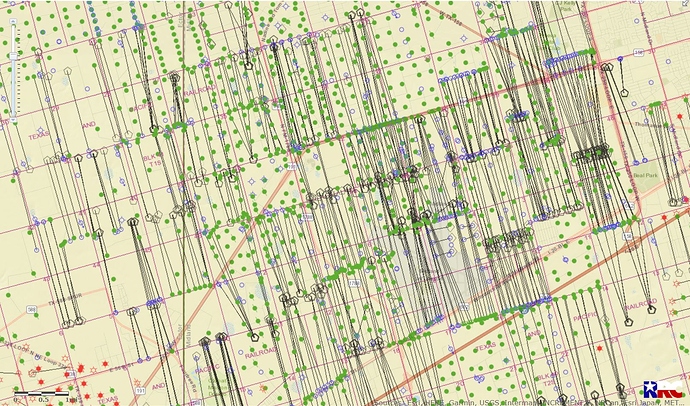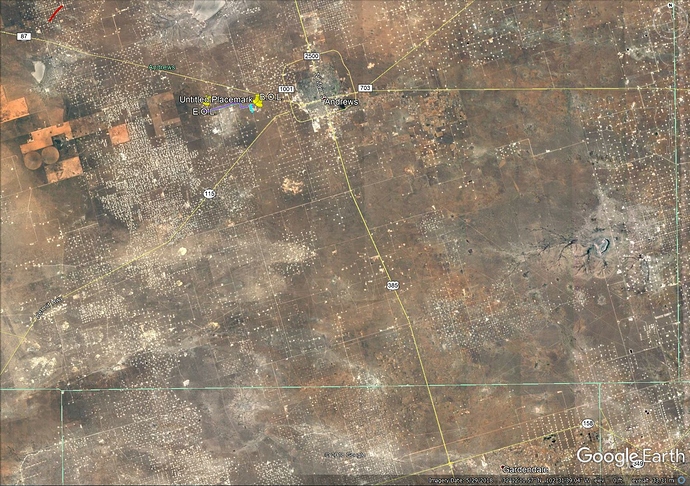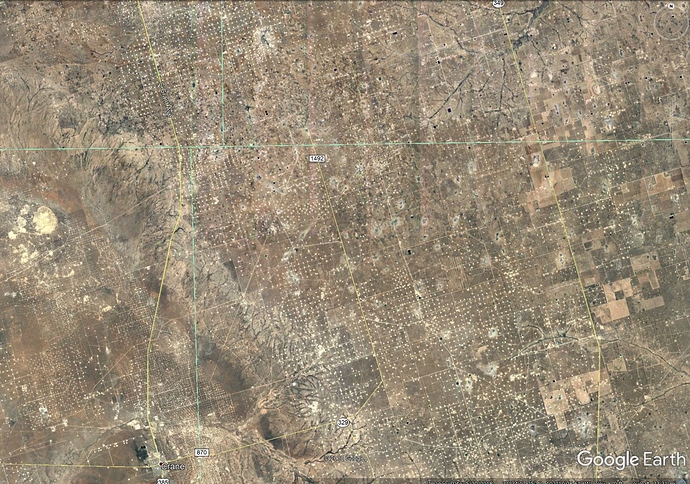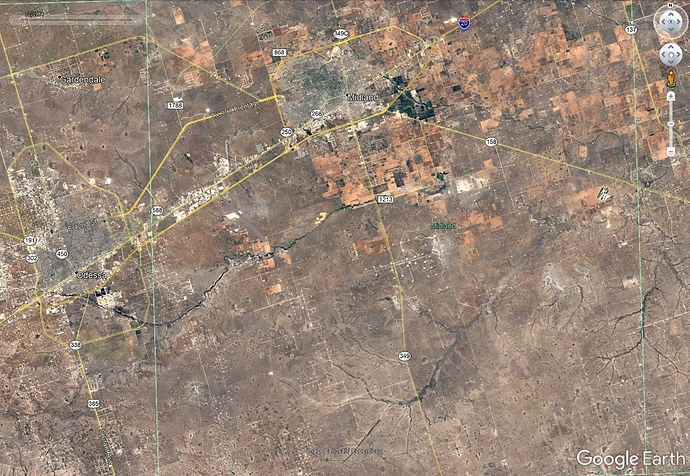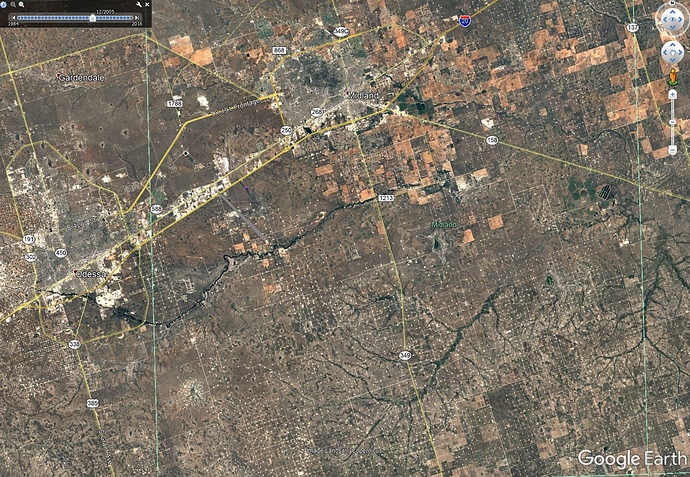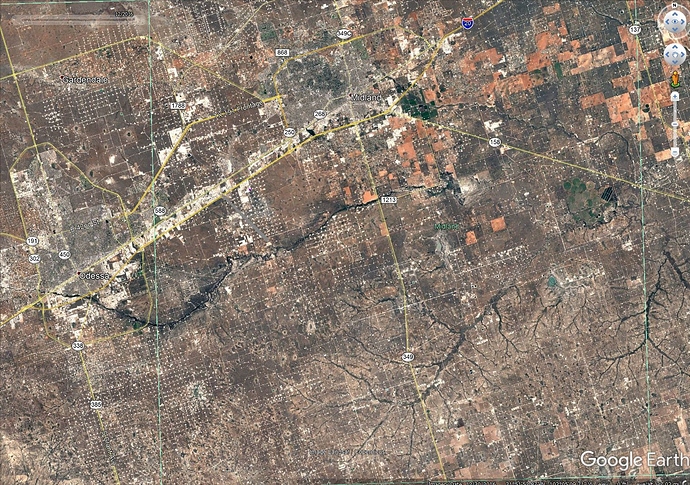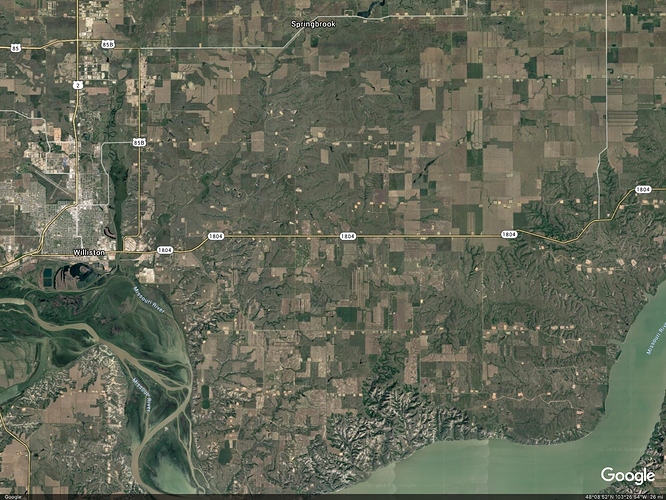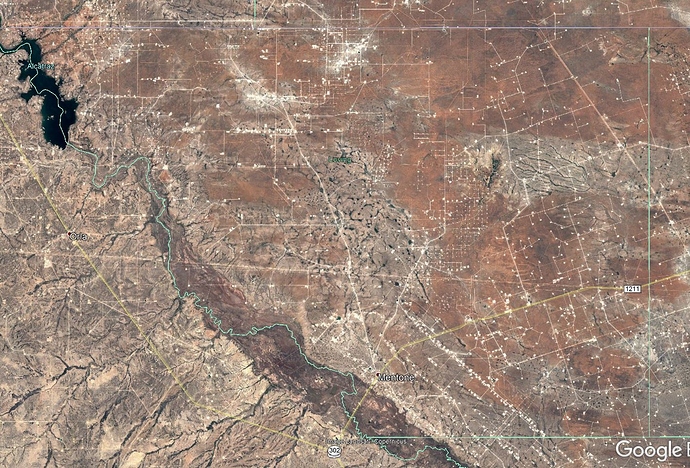Ah, no worries. I was just trying to convey how activity in a resource play differs from an old style conventional play: concentrated activity along a section line vs “a well every 20-40 acres”. Resource plays are less disruptive in terms of surface damage. It is eerie driving through the Bakken: open prairie open prairie eight pump jacks in a cluster open prairie open prairie repeat.
That being said, nobody chooses to live near oil field or any heavy industry. I certainly wouldn’t, and I sympathize with those who do.
To expound on what @Enidigm said, modern activity pattern goes something like this:
1). Company secures leases
2). Company drills wells such that the leases are “secured” by production. This a out of my wheelhouse, but essentially you have X amount of time to drill and produce on a lease before the reverts to the previous owner.
3). Once the leases are leases are secured, infill drilling takes place. The amount of infill is mostly dependent on the formation, and a little on economics. For example, the Bakken averages 80 feet or so. You can’t stagger wells vertically in such a narrow zone. Originally, Bakken wells were drilled roughly 2000ft apart, to keep the wells from “interfering” during fracking. Fracking a well too close to another well producing would cause the fracking zones to overlap, and would flood the producing with fracking fluids. As the reservoir science and economics has improved, that spacing has been reduced, accepting that interference will occur, but knowing that 6 moderately producing wells outpace 2 good ones. The optimum spacing in the best parts of the Bakken ended up being around 600ft.
In thicker zones (1000ft+) like the Permian and Niobrara, the wells are staggered vertically as well as horizontally. This allows for closer horizontal spacing, as fracking is more of horizontal than vertical process. And this is why you can have over 20 wells on a single pad.
How quickly the infilling is done depends on the price of oil. When the OPEC opened the taps a few years ago, the price of oil plummeted. This had the desired short term effect of all but stopping most resource play drilling. A Bakken well at the time was only profitable at $60/barrel. At its low point, the price was under $30/barrel.
The long term effect of this was that industry got a lot more efficient, improved technology, and found cheaper resource plays to drill to the point they can still make money at $40/barrel. The lessons learned from last few years will also keep fracking and drilling companies from swelling their ranks, even as the price of oil slowly climbs.
Thus, the drilling will be relatively slow compared to the heyday of 2010-15.
5). After a pad has been “filled” the activity drops dramatically. Most of the action at this point involves injections of CO2 to stimulate oil production. Horizontal wells have short lifespans.
These pads will be there for a long time, at least as long as the wells remain economically productive, or barring changes in laws concerning leasing and mineral rights.
A long time, but not forever.

Signal Hill, Los Angeles, 1923.

Signal Hill, Present.
I hope the above was useful, “the more you know” and all that.

